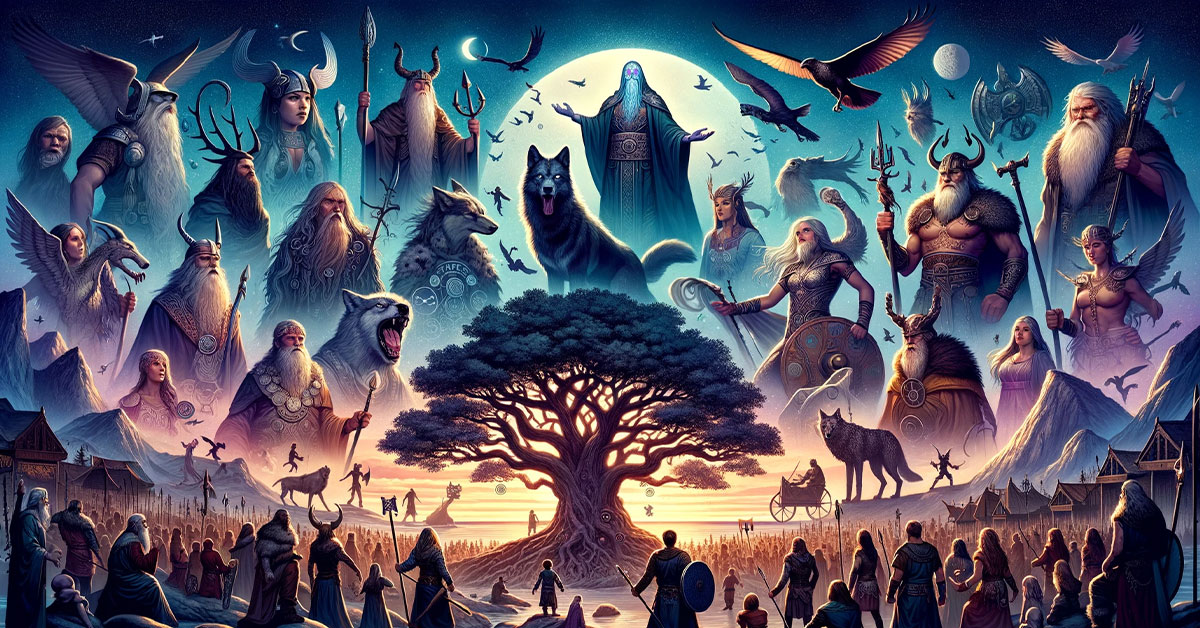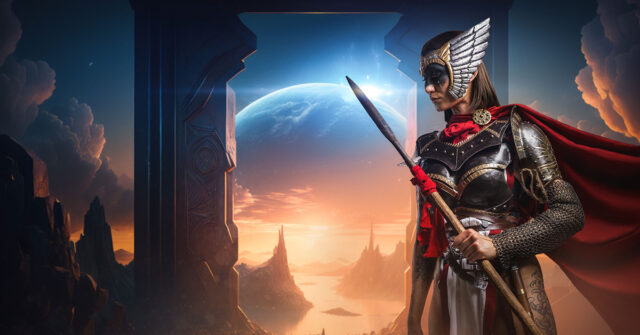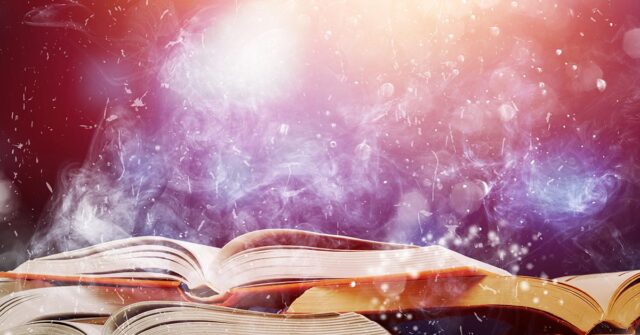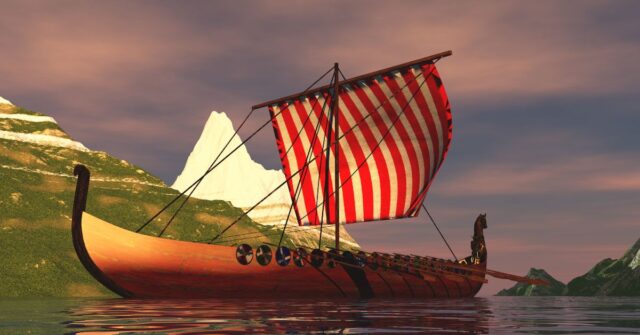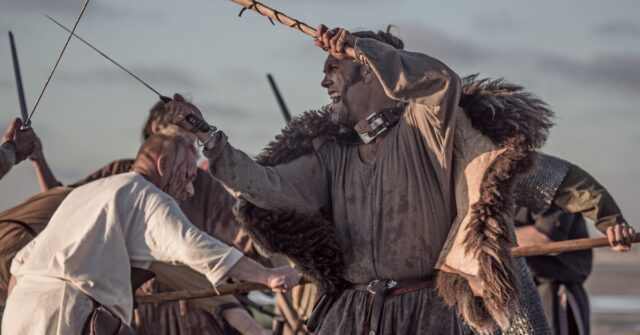Norse mythology, the vibrant and intricate mythology of the Scandinavian peoples, is a fascinating field that has captured the imaginations of many.
In this comprehensive overview, we will delve into the various aspects of Norse mythology, exploring its gods, creatures, cosmology, and the profound impact it has had on culture and literature.
Whether you are a newcomer to the topic or looking to deepen your knowledge, this guide aims to provide an insightful and engaging exploration of Norse mythology.
Introduction
In the frigid lands of Scandinavia, a rich tapestry of gods, goddesses, and mythical beings was woven into the fabric of everyday life.
Norse mythology is the body of myths of the North Germanic peoples, stemming from Norse paganism and continuing after the Christianization of Scandinavia. Let’s embark on a journey to understand its origins, significance, and key components.
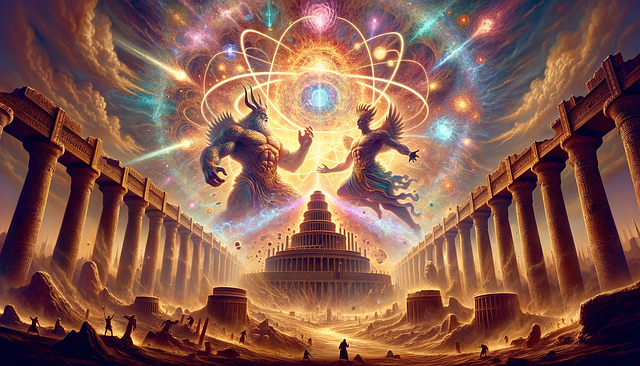
What is Norse Mythology?
Norse mythology encompasses the beliefs, stories, and practices of the Scandinavian people, primarily the Vikings, from the late 8th to the early 11th century.
It is a polytheistic tradition, featuring a pantheon of powerful deities, each with their unique characteristics and domains. These myths were orally transmitted, with many of them preserved in ancient texts such as the Poetic Edda and the Prose Edda.
Historical Context and Origins
The myths of Norse mythology were born out of the harsh, unforgiving landscapes of Scandinavia and the complex, seafaring society that thrived there.
They have roots in earlier Germanic and Indo-European traditions, but they evolved into a distinct form that reflects the beliefs, values, and experiences of the Viking Age Scandinavians.
The mythology was intertwined with the Vikings’ daily lives, influencing their art, literature, and even their understanding of the world around them.
Significance in Scandinavian Culture
Norse mythology played a crucial role in shaping the culture, values, and worldview of the Scandinavian people.
The myths provided explanations for natural phenomena, conveyed moral lessons, and underscored the importance of bravery, honor, and loyalty.
They also served as a source of inspiration for countless works of art and literature, both in the ancient world and in modern times.
Today, Norse mythology continues to be a subject of fascination and study, reflecting the enduring legacy of the Vikings and their rich cultural heritage.
The Cosmology of Norse Mythology
At the heart of Norse mythology is a complex and vibrant cosmology, consisting of nine interconnected worlds and a massive, central World Tree known as Yggdrasil.
This section explores these worlds, the cosmic tree, and the role of magic within the Norse mythological universe.
The Nine Worlds
The Norse cosmos is divided into nine distinct worlds, each home to different beings and realms. These worlds are held together by Yggdrasil, the World Tree, a massive, sacred ash tree that connects all of existence.
Asgard: Home of the Aesir
Asgard is the lofty realm of the Aesir, the principal tribe of gods in Norse mythology. It is a place of grandeur and power, where the gods hold court and discuss matters of great importance.
Odin, the Allfather, resides here, along with other prominent deities like Thor and Frigg.
Midgard: The World of Humanity
Midgard is the world of humans, a realm connected to Asgard by the Bifrost, a magical rainbow bridge.
The Norse people believed that they shared Midgard with various other beings, both benign and malevolent. They also believed that the actions of the gods directly influenced their lives.
Jotunheim: Land of the Giants
Jotunheim is the wild and untamed land of the giants (Jotnar), beings often in opposition to the gods. The giants represent the forces of chaos and destruction, and they play a central role in many of the myths, particularly in their interactions with the gods.
Other Realms
Aside from Asgard, Midgard, and Jotunheim, there are six other worlds, each with its unique characteristics and inhabitants. They are:
- Vanaheim, home of the Vanir gods.
- Alfheim, the realm of the light elves.
- Svartalfheim, home of the dwarves.
- Nidavellir, another realm associated with dwarves.
- Helheim, the land of the dead.
- Muspelheim, the fiery realm of chaos and the home of the fire giants.
The World Tree: Yggdrasil
Yggdrasil, the World Tree, stands at the center of the Norse cosmos, connecting all of the worlds together. It is an immensely important symbol in Norse mythology, representing the interconnectedness of all life and the cyclical nature of existence.
The Norns, mysterious beings associated with fate, reside at the base of Yggdrasil, weaving the destinies of gods and men alike.
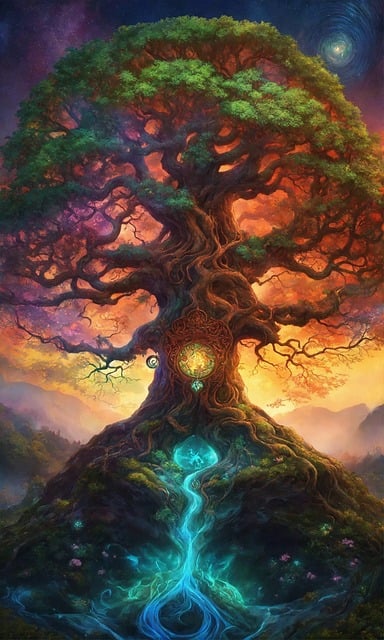
The Role of Magic and Divination
Magic played a significant role in Norse mythology and was believed to be a powerful force that could shape events and destinies. Seidr was a form of magic practiced by both gods and humans, involving the manipulation of fate and the natural world.
Divination, the practice of seeking knowledge of the future, was also common, and the gods themselves were known to seek the wisdom of seers and oracles.
Major Gods and Goddesses
The pantheon of Norse deities is diverse and colorful, with each god and goddess possessing unique attributes, stories, and domains. This section introduces some of the major deities in Norse mythology and explores their roles and significance.
Odin: The Allfather
Odin, the chief of the Aesir tribe of gods, is a complex and multifaceted deity associated with wisdom, war, and magic. He is known for his relentless quest for knowledge, often at great personal cost.
Odin is also a warrior god, leading the gods in their battles against the giants and other threats.
Thor: God of Thunder
Thor, the son of Odin, is one of the most well-known and revered gods in Norse mythology. He is the god of thunder, lightning, storms, oak trees, strength, the protection of mankind, and also hallowing and fertility.
Thor wields Mjolnir, a powerful enchanted hammer, and he is renowned for his incredible strength and bravery.
Loki: The Trickster
Loki is a unique figure in Norse mythology, known for his cunning, deceit, and shape-shifting abilities. He is both a helper and a hindrance to the gods, and his actions often lead to unintended consequences.
Despite his chaotic nature, Loki is an integral part of the Norse pantheon, and his stories are among the most entertaining and complex.
Freya and Freyr: Deities of Love and Fertility
Freya and Freyr are brother and sister deities associated with love, fertility, and prosperity. Freya is also connected to magic, beauty, and war, while Freyr is known as the god of peace and prosperity.
Both play crucial roles in Norse mythology, embodying the themes of love, abundance, and the cyclical nature of life.
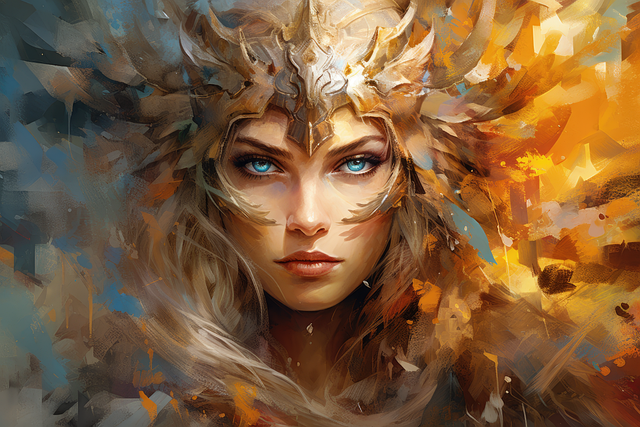
Other Notable Deities
In addition to the major gods and goddesses mentioned above, the Norse pantheon includes a wide array of other deities, each with their unique attributes and stories.
These include Frigg, Odin’s wife and the queen of the Aesir; Heimdall, the watchman of the gods; and Baldur, the beloved god of beauty and light, among others.
Creation and End Times: From Ymir to Ragnarok
The Norse cosmos has a rich and detailed creation myth, as well as a prophecy of its end in the cataclysmic event known as Ragnarok.
This section explores the origins of the world, the role of giants in Norse cosmogony, and the events leading up to and following Ragnarok.
The Creation of the World
The world in Norse mythology was created from the body of the first being, Ymir, a giant born from the primordial chaos. The gods Odin, Vili, and Ve slew Ymir and used his body to create the world, establishing the cosmic order and the nine worlds.
The Role of Giants in Norse Cosmogony
Giants play a significant role in Norse creation myths, representing the forces of chaos and nature. They are often in opposition to the gods, embodying the untamed and wild aspects of the world.
Despite their antagonistic role, giants are also integral to the balance of the cosmos, and their interactions with the gods add depth and complexity to Norse mythology.
Ragnarok: The Twilight of the Gods
Ragnarok is the prophesied end of the world in Norse mythology, a series of cataclysmic events that will lead to the death of many major gods, including Odin, Thor, and Loki.
It will be a time of great turmoil and conflict, culminating in a new beginning and the rebirth of the world.
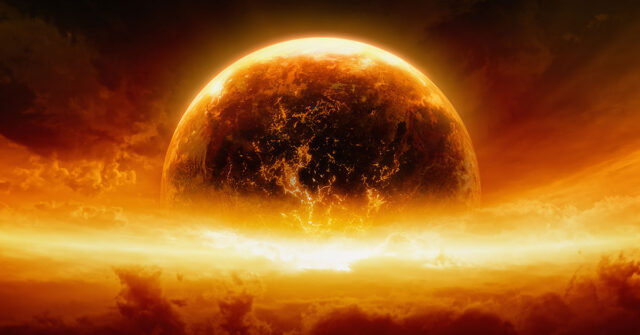
Life After Ragnarok
Following Ragnarok, a new world will emerge, fresh and rejuvenated. Some gods will survive, and two human beings will repopulate the earth.
This cyclical view of time and existence is a central theme in Norse mythology, reflecting the Norse people’s understanding of the natural world and their place within it.
Mythological Creatures and Beings
Norse mythology is teeming with a myriad of mystical creatures and beings, each with their unique stories and attributes.
This section delves into the roles and significance of some of these beings, from the Norns and Valkyries to elves, dwarves, and monsters.
The Norns: Shapers of Destiny
The Norns are mysterious beings who reside at the base of Yggdrasil, the World Tree. They are akin to fates, weaving the destinies of gods and men alike.
The Norns play a crucial role in Norse mythology, embodying the themes of fate, time, and the cyclical nature of life.
Valkyries: Choosers of the Slain
The Valkyries are warrior maidens who serve Odin, choosing those who may die and those who may live in battles. They are associated with death, war, and fate, and they play a central role in the Norse understanding of heroism and the afterlife.
Elves, Dwarves, and Other Beings
In addition to gods and giants, Norse mythology includes a variety of other beings, including elves, dwarves, and spirits. Elves are often associated with nature and beauty, while dwarves are renowned for their craftsmanship and skill in metalworking.
These beings add depth and complexity to the Norse cosmos, enriching the tapestry of stories and beliefs.
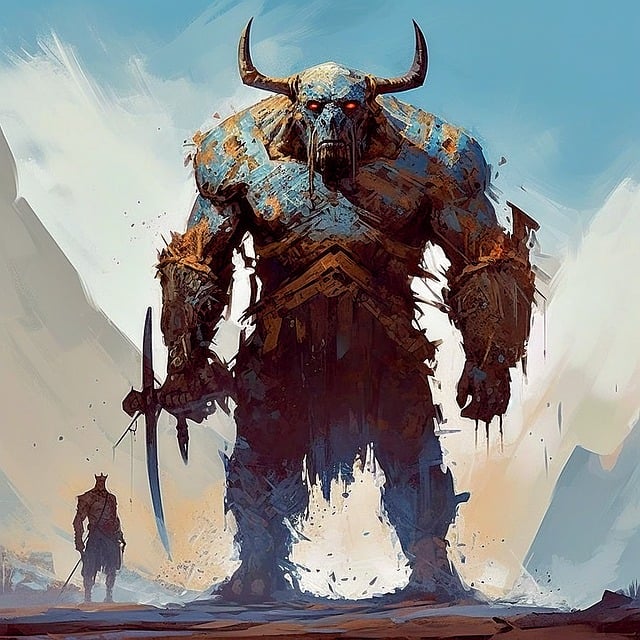
Monsters and Adversaries
The myths of Norse mythology also feature a host of monsters and adversaries, from the Midgard Serpent, Jormungandr, to the wolf Fenrir.
These beings represent the forces of chaos and destruction, providing challenges and adversaries for the gods and heroes of the myths.
Norse Mythology in Art and Literature
Norse mythology has had a profound impact on art and literature, inspiring countless works throughout the centuries. This section explores the ancient texts that preserve these myths, as well as their influence on visual arts and modern media.
The Poetic Edda and The Prose Edda
The Poetic Edda and The Prose Edda are two of the most important sources of Norse mythology, containing a wealth of stories, poems, and lore.
The Poetic Edda is a collection of Old Norse poems from the Icelandic medieval manuscript Codex Regius, while The Prose Edda is a work by the Icelandic scholar Snorri Sturluson, providing a guide to Norse mythology and poetics.
Sagas and Other Literary Works
In addition to the Eddas, Norse mythology is preserved in a variety of other ancient texts, including sagas, historical records, and rune stones. These works provide valuable insights into the beliefs, practices, and daily lives of the Norse people.
Depictions in Visual Arts
The myths of Norse mythology have also been depicted in a wide range of visual arts, from ancient carvings and artifacts to modern illustrations and paintings.
These depictions provide a visual representation of the stories and themes of Norse mythology, bringing the myths to life for new generations of viewers.
Norse Mythology in Modern Media
In recent years, Norse mythology has experienced a resurgence in popularity, thanks in part to its depiction in modern media.
From blockbuster movies and television shows to video games and comics, the gods, heroes, and stories of Norse mythology continue to captivate audiences around the world.
Rituals and Religious Practices
The religious practices and rituals of the Norse people were intrinsically linked to their mythology, serving as a means of honoring the gods, ensuring favor, and making sense of the world around them.
This section explores some of the key rituals and practices of Norse paganism.
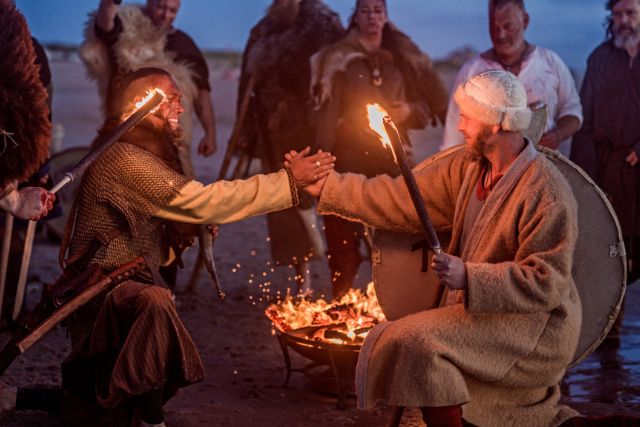
Burial Customs and Rites
The Norse people had complex and varied burial customs, which were influenced by their beliefs in the afterlife and the importance of honoring the dead.
Burials were often accompanied by grave goods, including weapons, jewelry, and other items of personal or symbolic significance.
The deceased might be buried in a mound, laid to rest in a ship, or cremated, depending on their status, wealth, and regional customs. These practices were seen as crucial for ensuring a safe journey to the afterlife and maintaining the favor of the gods.
Sacrifices and Offerings
Sacrifices and offerings were a central part of Norse religious practice, serving as a means of communing with the divine and securing blessings.
Animals, and occasionally humans, were sacrificed to the gods during religious ceremonies, while offerings of food, drink, and valuable items were made at shrines and sacred sites.
These practices were believed to uphold the cosmic balance and reinforce the reciprocal relationship between the gods and humanity.
Seasonal Festivals and Celebrations
The Norse calendar was marked by a series of festivals and celebrations that corresponded with key seasonal transitions. These events were opportunities for communal gathering, feasting, and the performance of religious rituals.
Yule, a midwinter festival, was one of the most important celebrations, marked by feasting, storytelling, and the honoring of the gods.
Other significant festivals included Midsummer and the vernal and autumnal equinoxes, each with their own customs and traditions.
Legacy and Revival of Norse Mythology
The influence of Norse mythology extends far beyond the Viking Age, leaving a lasting legacy on world culture, art, and literature. This section explores the continued relevance of Norse myths and the modern revival of Norse paganism.
Impact on Literature and Art
Norse mythology has had a profound impact on Western literature and art, inspiring generations of writers, artists, and thinkers.
From the epic sagas of the medieval period to the works of William Blake and J.R.R. Tolkien, the themes, characters, and stories of Norse mythology have been a rich source of inspiration.
The mythology has also been depicted in countless works of art, ranging from ancient carvings to modern paintings and sculptures.
Pop Culture and Media
In recent years, Norse mythology has experienced a resurgence in popularity, thanks in part to its prominent portrayal in pop culture and media.
Movies, television series, video games, and comic books have introduced Norse gods, heroes, and myths to a global audience, often blending traditional stories with modern narratives and themes.
This has led to a renewed interest in Norse mythology and a greater appreciation for its complexity and depth.
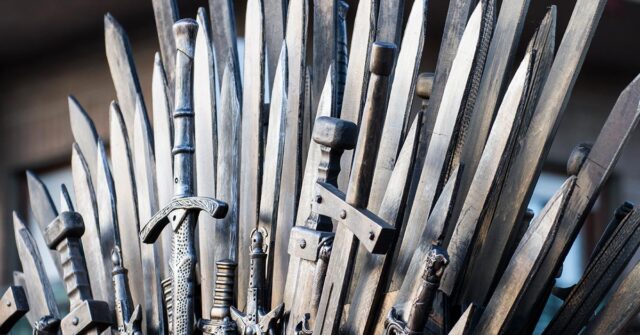
Modern Paganism and Asatru
Alongside its cultural and artistic influence, Norse mythology has also played a role in the modern revival of pagan religious practices.
Asatru, or Heathenry, is a contemporary pagan movement that seeks to reconstruct and revive the religious beliefs and practices of the Norse people.
Practitioners honor the gods, celebrate traditional festivals, and incorporate Norse myths and symbols into their spiritual lives.
This revival reflects a broader interest in reconnecting with ancient beliefs and finding spiritual meaning in the myths and traditions of the past.
Conclusion
Norse mythology is a rich and vibrant tradition, filled with stories of gods, heroes, and mystical beings. Its complex cosmology, profound themes, and enduring legacy continue to captivate the imaginations of people around the world.
From the ancient sagas to modern media, the myths of the Norse people remain a powerful and influential force, reflecting the enduring human fascination with the divine, the mystical, and the heroic.
Further Reading and Resources
For those interested in delving deeper into Norse mythology, there are numerous resources and texts available. The Poetic Edda and The Prose Edda are essential reading for anyone seeking to understand the original myths and stories.
Additionally, scholarly works and commentaries provide valuable insights and interpretations. Various online resources and communities also offer a wealth of information, discussions, and perspectives on Norse mythology and its modern revival.

